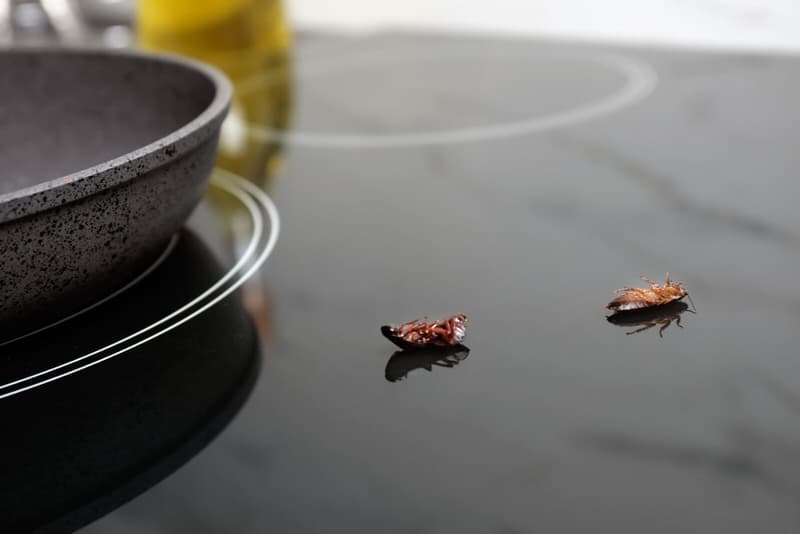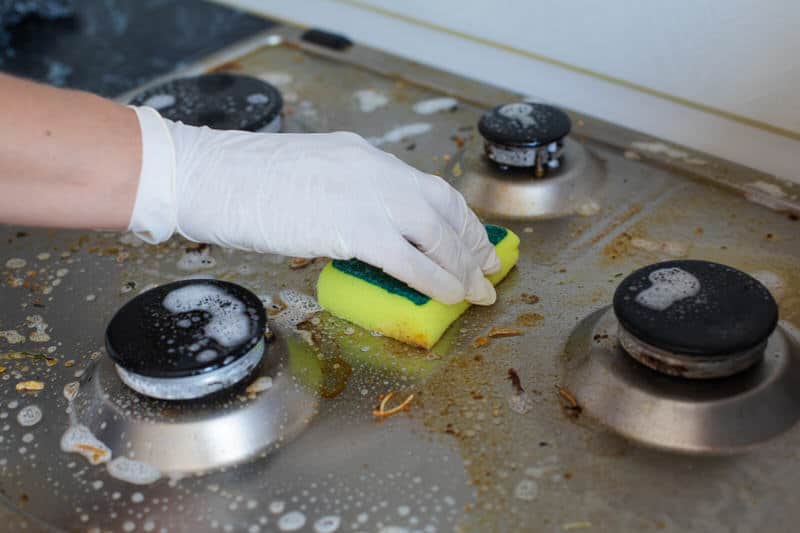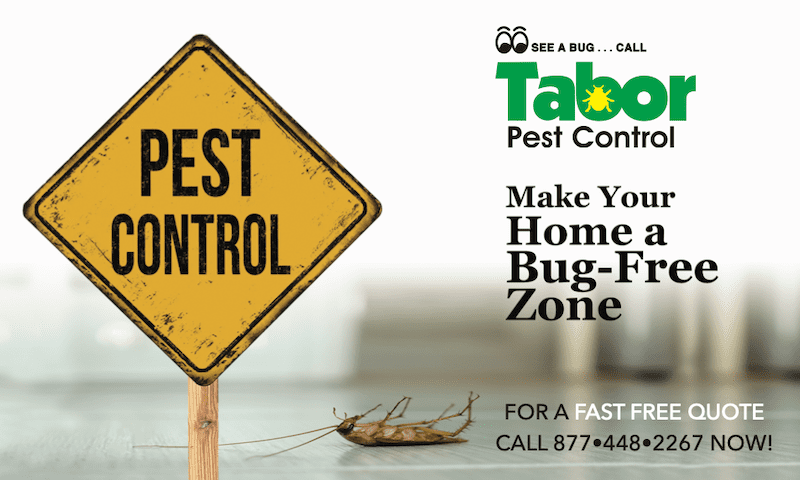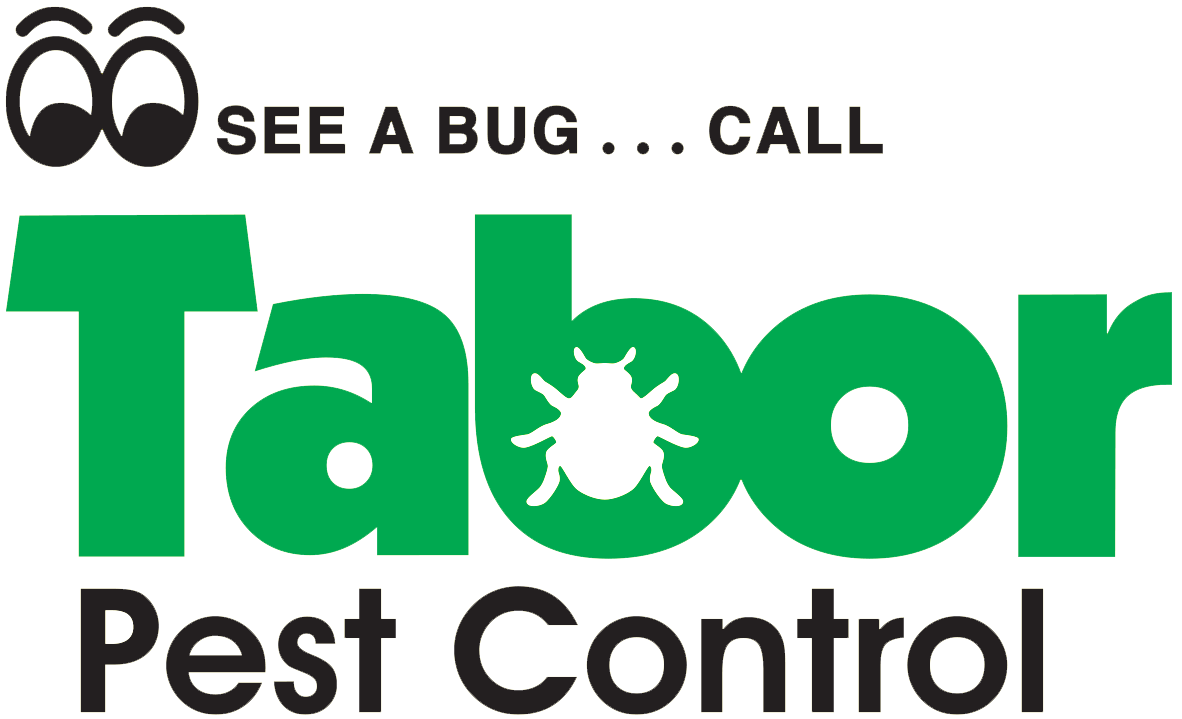Tiny Black Bugs In The Kitchen: Identification & Effective Elimination
As you walk into your kitchen during the day, you notice a small black bug moving in your peripheral vision. Scary, isn’t it? Several black bugs could invade your kitchen, which might cause havoc to your mental and physical health.
Getting rid of these bugs might be your initial response. But before that, identifying the bug that has infiltrated your kitchen is more important. It is crucial to understand the correct method for removing them.
Let’s identify the black bugs that are keeping you up at night. Then, we can explore various ways to eliminate them from your kitchen.
How to identify the black bugs in your kitchen
Nobody likes finding black bugs in their kitchen. Be it on the countertop, around your fruits, or inside the half-open packet of biscuits or chips. It’s unsanitary and disgusting at the same time to find bugs in a place where you store and prepare your food.
But there are different kinds of bugs, and it’s essential to know why they’re in your kitchen and how to get rid of them.
1. Pantry pests
Dry food kept in the pantry attracts a particular type of bug species. Moths, beetles, grain mites, and weevils can be found in dry food items stored in the cabinets.
There’re various ways you can spot bug activity in cabinets. One such thing is to find webbing and cocoons to help to spot some bug activity.
Finding insects in the cabinet is one of the most prominent issues people face and is quite a common household issue people have to deal with.
The foods that get contaminated by them include:
- Cereals
- Dried beans
- Popcorns
- Nuts
- Raisins and other dried fruits
- Tea
- Cured meats
- Spices
- Powdered milk
- Chocolate
Even if you don’t leave your packets and jars unopened, insects can infest your food if you don’t clean your pantry often enough.
Most of the time, throwing away contaminated food is the only way to deal with it. Cleaning the whole thing out is another way to ensure it doesn’t affect other food products as well.
Carpet beetles, known by their name, attack textiles such as clothes and carpets but can also feed on pantry food. They can genuinely become annoying.
You can identify them as oval-shaped insects. They usually leave behind irregularly shaped holes in carpets, rugs, clothing, or upholstery.
They also shed their skin or leave fecal residue behind in the pantries.
The only way to solve this issue is to clean regularly, vacuum your carpets, wash your clothes frequently, and clean out your cabinets and cupboard to eliminate their existing eggs and larvae.
2. Fruit flies
If you haven’t heard about fruit flies, have you seen small bugs flying around your fruits?
If you don’t cover your food, it will attract flies. The same goes for the fruits kept in the fruit basket.
Fruit flies are also seen around vegetables when kept outside for a long time. You can identify them as black or brown bugs and as small as 1/8 inch long.
They hover around the food left in the open without anyone consuming it.
If you don’t tend to eat fruits a lot but have a habit of buying them anyway, you might see them around the fruits once they are fully ripe. They accumulate in large numbers around something that’s decaying.
3. Black ants
You can find ants commonly in the kitchen. It’s almost too common to find them there; they’re so small they can enter through the tiniest gaps you don’t know about.
While a small number of ants aren’t harmful, a whole line of ants can cause some serious damage to your health.
If you don’t clean your kitchen often and there’re food crumbs around, or leave food containers open, there’s a huge chance of ants multiplying.
4. Roaches and drain flies

The garbage disposal area is another popular area that attracts flies and other black bugs.
Especially when you keep it inside the cabinet below the sink. This is also where the garbage can is likely to face more infestation.
The bugs are likely to have hairy wings that resemble tiny black moths and are black or brown. They enter through the drainage system and may enter your garbage disposal can if left open.
Smaller roaches are bound to enter through the drainage system, and so are cockroach nymphs which are wingless versions of adult cockroaches. They feed on organic matter that’s decomposing.
5. Silverfish
These bugs are different as they’re silver in color and have scales that cover their elongated bodies. Bathrooms and kitchens usually have dark and damp spaces with high humidity.
You won’t be able to spot them during the daytime because they’re nocturnal and turn up during the night only. They feed on cardboard and fabric.
If your place is humidity-free, you won’t see them hovering around. Keeping your kitchen’s dark areas clean is another factor that can help.
How can you prevent a tiny black bug infestation?
Bugs like these, which you see in your kitchen, aren’t that difficult to deal with, and proper measures can prevent them from entering your kitchen again.
There are a couple of things you absolutely need to take care of, which involves a constant effort on your part.
Keep the kitchen clean
Cleaning is essential; this is how you prevent most bugs from infesting your home, including your kitchen.

When you’re living alone, it’s still a bit easier to clean on weekdays, but as a couple, it can be challenging to find time, plus you have more things to clean.
Weekends are perfect to find time and ensure your home is thoroughly cleaned.
Maintaining proper cleanliness ensures a sanitary environment and reduces the risk of diseases.
Do the basic cleaning during the weekdays by keeping the countertop clean, closing lids of containers with food inside, taking out trash regularly, and keeping the floors clean.
During the weekend, you can tackle the pantry area and any other enclosed space in your kitchen. Keep things clean as possible, including areas behind appliances and the kitchen sink.
Be mindful of food storage
Find the right way to store your food items. If you open a packet, ensure that it’s closed off or kept in a container that is sealed off with the lid.
This way, insects or any black bugs won’t be attracted by the smell of food left out in the open. Cover up all your grains, cereals, and other food items.
Keeping things closed off isn’t the only solution, but you must check in with the food that hasn’t been used in a long time.
If the container is left untouched for a long time, the food might develop insects without you knowing. Also, throw away any expired food items.
Other things to keep in mind include:
- Fix any leaks in your kitchen.
- Keep the kitchen dry and clean.
- Make sure you ventilate your kitchen daily.
Home remedies to get rid of black bugs
You can use a few things from your home to prevent further entry of any bugs and get rid of them. These include:
- Borax mixed with sugar can be used to spread in the areas where you have spotted roaches.
- Baking soda can be sprinkled to ward off ants.
- Garlic can be potent in keeping bugs away.
- When sprayed on bugs, peppermint oil mixed with water can keep them away.
- Neem oil helps disrupt the feeding and reproductive cycle of bugs. Mix it with water and spray on the bugs.
- Diatomaceous is a natural insecticide that you can spread on the entry points of the kitchen or your home to kill small insects.
- Place bay leaves in your pantry or closet to let beetles and moths stray from the food items.
Vinegar solution is another non-poisonous way to deal with black bugs in your kitchen. Mix equal parts of vinegar with water with a few drops of dish soap. Keep this solution near the areas where you see bugs often. Keep them at entry points as well to catch these bugs.
You can pour boiling water occasionally to keep things coming from the drainage system. This is the easiest way to keep bugs away.
However, these DIY home solutions might not always work, and you might want a more permanent way or professional way to deal with the bugs in your kitchen.
When to call a professional

Dealing with bugs or insects can be time-consuming or disgusting to you on your own, primarily if they have grown in number. Sometimes you can’t let things go on by using DIY methods and want a more professional way of handling the termination of bugs.
Tabor Pest Control can help you with the bug infestation situation in your kitchen. You can reap various benefits with our services which include:
1. Identification of bugs
Identifying the bugs that have infested your kitchen will be our responsibility. You don’t need to do anything; our professionals will do an evaluation and let you know what bugs you are dealing with. This will help us further in knowing how to deal with it.
2. Minimizing property damage
A small species of bugs in your kitchen can hold the power to attract other kinds of bugs in your home and kitchen. Before you know it, they can cause significant harm to your property. Exterminating even the smallest of bugs from your kitchen will help reduce any such risks.
3. Health concerns
Bugs are known to spread diseases, and black bugs in your kitchen can spread diseases via food to you. Hiring professionals from Tabor Pest Control will help you keep your family safe from food contamination and maintain sanitary conditions moving forward.
4. Avoiding further infestation
DIY remedies can only take you so far and aren’t permanent. It can’t keep away future infestations away. With the help of our professionals, you can keep your worries away and let them help prevent any future infestations.
FAQs
What are the black specks in my kitchen?
Usually, they are cockroach droppings that are black or brown in color. They also resemble black pepper or coffee seeds. You might also confuse them with coffee grounds and also with dirt stains.
What insects leave tiny black dots?
Roaches, house flies, fruit flies, and silverfish are some of the bugs that leave behind black marks. If you find these black dots in your kitchen, these specific bugs might be roaming around in your kitchen.
What are tiny black bugs found in both the kitchen and bathrooms?
Bugs such as pharaoh ants, carpenter ants, and drain flies are some of the bugs found in both the kitchen and bathroom. They might be attracted to the moisture and food sources, and there’s no place better than these two locations in your home.
Are there any black bugs in my kitchen at night?
Roaches are nocturnal and run around in the kitchen at night. These are the most prevalent bugs you might see in your kitchen during the night.
Termite Troubles: How To Spot & Treat Termite Infestations
Termites cause one of the most troublesome pest infestations the U.S. faces each year, leading to an estimated $30 billion in damage, including crops and furniture.
Spring and summer are the swarming seasons for termites, but these little pests are clever and can stay hidden for years without significant notice.
The scary part is that once they infest your home, termites are quick to multiply and spread within a few days. So, taking precautions against termites is of utmost priority, which can be done by focusing on the tell-tale signs and using timely, effective treatment to deal with them.
Termite infestation
Termites inflict extensive home damage annually in the U.S., with populations in every state except Alaska.
On average, termite damage can cost American homeowners about $3,000 in repairs.
Alabama and Georgia are hot spots for termite infestation, so much so that Alabama ranks #1 in Termite Infestation Probability Zone, which is considered very heavy.
On the other hand, it’s estimated that 1 in 5 homes in Georgia has been infested by termites each swarming season.
With such a high infestation probability, knowing how to identify a termite infestation before it causes major damage to your property is vital.
How can you tell if you have termites in your home?
The thing with termites is that they can easily stay hidden. While they’re eating away at your home from the inside, you wouldn’t know anything is wrong until a few months or even years later.

The physical warning signs to recognize a termite infestation can include:
- Discolored or drooping drywall
- Peeling paint on the walls that looks like water damage
- Wood that sounds hollow upon knocking on it
- Small round holes in your furniture
- Wood that looks like it’s about to collapse or snaps on its own
- Squeaky wooden floorboards
- Tiles loosen from the added moisture that termites cause
- Piles of small transparent wings which termites often leave
- Mud tubes or small accumulations of wood shavings around or on your furniture
- Mounds of dry-wood termite pellets often resembling small piles of salt or pepper
Termite species in Georgia and Alabama
In Georgia, you can find three common types of termite species infesting your home including:
- Eastern Subterranean termite
- Formosan termite
- Drywood termite
The Eastern Subterranean termite is most commonly found infesting homes in Georgia, among the three species mentioned above.
The Formosan species is considered to be very aggressive, while the Drywood species is rarely found here as they mainly dwell around the Metro Atlanta area.
Both the Eastern Subterranean and Formosan are in-ground dwellers and enter your home through the flooring.
They are so tiny they can easily squeeze through gaps less than a one-sixteenth inch wide.
You will never be able to locate them on the ground surface as their survival depends on the constant need for water and moisture, thus locating them underground.
In Alabama, you can find Drywood and Subterranean termite species damaging homes. They generally swarm on a warm day after rainfall, so spring and summer are their swarming seasons.
How do I know it’s termites?
The termites that cause an infestation in your home are the ‘workers’ in the termite colony. Then there are ‘swarmers’ or ‘winged reproductive’ who are the colonists as they form new colonies.
You might be able to spot these as they find suitable locations for new colonies by going around.
Focusing on its physical attributes helps differentiate a termite from other insects, such as flying ants.
📌 Termites have a straight antenna, similar-sized, paired wings, and a thick but straight waist.
How can I prevent termite infestations?
Termites are tiny and so finding them or even looking for signs that they exist in your home can be tricky.
In fact, most people aren’t even aware they have a termite infestation until they see massive damage. Or the termite population becomes so significant that you see them flying or roaming around your house.
But there are ways you can prevent the infestation from happening again or follow a few steps to prevent termites from growing more.
- Fix any leaks in your home immediately.
- Keep your vents free, and if there’s any blockage, fix it immediately.
- If you have any trees or a yard around your house, maintain it properly, as overgrown trees around the home can allow infestation.
- If you have cracks around your home or between wooden floorboards, fill them up and close all the small gaps.
- If you have wooden piles around your house, dispose of them.
- Don’t allow any other kind of clutter around your home which might attract termites.
Most importantly, a regular inspection of your home is necessary. Because even if you try to look out for signs of termite infestation in your home, you might not come across their existence until they grow in abundance and lead to some damage to your property.
The only way to ensure they don’t form their colony is by getting a professional to do regular inspections in and around your home.
This is where Tabor Pest Control services will come in handy. Our experts have the proper knowledge and training to find termites and effectively treat them.
How can I treat a termite infestation?
1. Non-chemical treatment
When people hear that a termite infestation needs treatment, they automatically think that chemical treatment is what they’ll require. But that’s not true for every situation.
Sometimes, non-chemical treatments are way more effective. Finding the best treatment for your home will depend on multiple factors. But for now, let’s look at the non-chemical ways you can eliminate termites in your home.
- Using steel mesh and sands of particular sizes around the home has proved effective.
- Some biological control agents like nematodes and fungi are also promising in some cases.
- In high-alert-infested areas such as Alabama and Georgia, it’s most important to use physical barriers when constructing your house.
2. Chemical treatment
Using chemicals isn’t the only way to eliminate termites. It depends on how bad the infestation is in your home.
In the United States, before a company can sell or distribute any pesticide, EPA must review studies on the pesticide to determine that it will not pose unreasonable risks to human health or the environment.
Once determined, a particular pesticide will be registered for license and used per the instructions on the label.
Termiticides are specifically used to eliminate termite infestations in any home. Trained professionals at Tabor Pest Control ensure no damage to your property.
These treatments would include:
- Liquid soil-applied termiticides
- Termite baits
- Building materials with termiticides
- Wood treatments
3. Soil barrier treatment
This is the most common method when dealing with termites. The termiticides used for barrier treatments must be specifically labeled for this usage.
Along with that, there’s a need to follow proper instructions. Otherwise, it may cause damage to the property, including contamination of drinking water.
Our professionals at Tabor Pest Control are licensed in chemical treatment for effectively eliminating termites in your home.
4. Termite baits
Small amounts of bait products are used in edible forms around the infested areas to eliminate large colonies of termites. Once the bait affects a few termites, they share it with other termites. It spreads and helps reduce the number of termites.
Cellulose is used to make termite baits, a structural wood component. Combined with slow-acting insecticide, it sneaks up and works as an effective treatment.
This delayed action is essential so that many termites consume it before the action takes place. Otherwise, they might start avoiding the bait.
5. Fumigation
Fumigation is another technique for dealing with termites, but it has pros and cons. It might effectively kill the live colonies but doesn’t work as a preventive treatment against future colonies. So, you can say it’s pretty short-term.

This kind of method is particularly effective in dealing with Drywood termites. Since they have more potential entry points available as compared to Subterranean termites.
Dealing with a termite infestation
Summer and spring are swarming seasons for termites. They enter your home and start forming colonies which can go unnoticed for years until you see hefty damage to your property.
They can be a total nightmare since there could be multiple colonies. If you miss out on a few, it might cause infestation again.
Alabama and Georgia are hot spots for termites, so regular inspections are a must when it comes to termites.
While you might know multiple treatments and how to use them against termites, an effective treatment won’t be possible unless you’re a licensed professional.
You have to consider multiple factors before eliminating termites, including the species, their colonies, and the damage scale.
These factors could change the treatment our professionals at Tabor Pest Control would be using.
With our expert knowledge and the right equipment, we can effectively deal with termites at your home.
FAQs
Will termites go away on their own?
Termites will never go away on their own. They will jump from one piece of furniture to another in your home and end up eating everything from the inside out.
The only way to deal with them is to apply effective treatments to terminate their colonies before they can spread more.
What is the lifespan of a termite?
Termites will exist depending on their kind. A worker termite might survive for a year or two. A queen termite could go and live up to more than a decade in your home.
During that time, a queen termite can produce many termites.
What happens if you ignore termites?
If you see a termite infestation and think it could be smaller and ignore its existence, you could end up with thousands of dollars worth of damage to your home. A large colony of termites could exist in your home, and you won’t be aware of them.
If you see warning signs of their existence, immediately call us so we can find effective ways to deal with them before they spread more.
What attracts termites to a home?
Termites infest homes with leaky pipes, improper drainage, and poor airflow. These conditions allow the perfect moisture content to attract them and build colonies in your home.
Both Drywood and subterranean termites thrive in humid conditions.
Common Pests In Southern Alabama & Georgia And How To Identify Them
Identifying common pests can be difficult for property owners as they come with multiple species. Any incorrect identification of any insect, mammal, microbe, or organism could damage your property and health severely.
Incorrect pest identification could cost you your time, money, and energy.
That’s what we at Tabor Pest Control specialize in, where our experts help you identify the kind of pest that’s infesting your property and find an effective way to terminate it.
What’s the importance of identifying pests?
One of the common pests in the south (especially Georgia) is ticks, external parasites that feed on mammals’ blood. There are 15 species of ticks, and finding what is commonly found in properties can be challenging.
For example, the American Dog Tick is the most active spring, summer, and fall species. Wooded paths, parks, and farm pastures are their common dwelling areas.
Now, if you’re not aware of how to differentiate this particular species from the rest, you won’t be able to know to what extent they are dangerous, how they transfer, how they live, and how they interact with their environment.
Correct identification of pests helps find different strategies to manage, control, and terminate a species.
Common pests in Southern Alabama
Many pests dwell in Alabama, and in the peak pest season, it feels like all that’s around you are just pests.
Alabama’s moderate temperature is ideal for all kinds of bugs, insects, and pests to survive and make their colonies all year round.
Alabama is ranked 8th in states with the most bugs present. Here are some of the common pests you’ll find in Alabama:
1. Ants

Ants are the most common invaders in your house and are recognized by their different colors of red, black, or brown. The most common species found in southern Alabama include:
- Little black ants
- Argentine ants
- Fire ants
- Acrobat ants
Danger level
Ants might seem harmless, but they can be dangerous for spreading diseases. As they roam in the dirt, they can easily contaminate food and various surfaces in your home with bacteria and pathogens.
You must have heard fire ants being named the most dangerous as their bite is painful and hurts the most. They are aggressive, and once they sting, their venom is strong enough to produce an allergic reaction, sometimes even becoming life-threatening.
Where to find them?
Ants can invade your home through various sources, such as attacking your trash, pest house, gardens, compost, and any moist area.
Since these are small, they can quickly get through the tiniest cracks in your property and invade your home, trying to build their nest.
For fire ants, you have to look for open and vast sunny areas as they love to reside in such places, but the Argentine ants prefer the exact opposite, which is moist areas, so keep a lookout under sinks.
How to get rid of them?
We at Tabor Pest Control have experts who can identify which kinds of ants dwell in which secret spots of your house. Contact us to get a free quote.
2. Bed Bugs

These blood-feeding pests not only exist on your bed but can be found in various other places where they can hide for up to a year without feeding if the temperature is just right and build their colony.
Danger level
Of course, bed bugs are dangerous as they bite warm-blooded mammals and can leave you feeling extremely itchy all over or cause allergies.
Another added mess they make is ruining your sleep and making you feel uncomfortable and worried.
Where to find them
We know beds are a common place for bed bugs to exist, but other places include:
- Wooden furniture, walls, and floor
- Behind wall hangings, clocks, and pictures
- Behind wall voids
- Electrical outlets and electronics
- In your pending dirty laundry
Your family, you, and your pets could also come in contact with bed bugs and bring them over from various places such as relatives’ or friends’ homes, movie theatre seats, and any other public spaces.
You can identify their traces by looking for the skins they shed after sometimes blood stains on clothes and mattresses and feeling unexplainable itchiness whenever you sit somewhere or sleep.
How to get rid of them
We have experts who can identify if bed bugs are dwelling in which secret spots of your house. Contact us to get a free quote.
3. Cockroaches
These most popularly feared pests can fly as quickly as they can crawl. Cockroaches are the world’s most resilient and highly adaptable creature, and can survive and grow in any corner of your house if you don’t eliminate their species.

There are different kinds of cockroaches, including species that share the same roof as you:
- Smokey brown cockroach
- Oriental cockroach
- German cockroach
- Asian cockroach
Danger level
Cockroaches can be pretty dangerous because they spread diseases such as Salmonellosis, Dysentery, and E.coli.
Since they can travel through gutters and survive anywhere, they carry various pathogens and bacteria infecting your surroundings.
Their shed skin and excrement also cause an allergic reaction in children.
These pests are also good at destroying your property as they can eat through anything in your home, from wallpaper to rugs, so you need to eliminate them.
Where to find them
These pests can enter through any source, from delivery parcels to traveling through drains and sinks and popping up in your bathrooms in the middle of the night.
They mostly travel through the night and come up to find their food during the night, which is another reason you wouldn’t know they exist in your home.
They would mostly hide in drains or in cracks around your home. If you tend to leave food open along with kitchen cabinets, it’s like a free buffet for them and gets inside your pantry as well.
How to get rid of them
We have experts who can identify if cockroaches are dwelling in which secret spots of your house. Contact us to get a free quote.
4. Fleas and ticks
Fleas can jump easily from one spot to another and travel this way to invade your home, but ticks can’t do the same, and they crawl and then attach themselves to a food source.
But both have something in common: they feed on blood.
Warm and humid weather is essential for their survival so they can multiply quickly. While ticks prefer to feed on human blood, fleas don’t prefer humans.
But food is still food, so it might still count as food to them at the end of the day.
Danger level
Both fleas and ticks spread lots of diseases, including causing allergic reactions.
Flea saliva is a common source of an allergic reaction, and their bite may cause dermatitis making us feel itchy and uncomfortable.
They can also infect with parasitic tapeworms, so the danger level is pretty high.
Ticks, on the other hand, may be responsible for causing the following diseases:
- Lyme
- Rocky Mountain spotted fever
- Tularemia
- Babesiosis
- Ehrlichiosis
Where to find them
Most animals, such as pets, tend to bring ticks or fleas to our home if they’re overlooked and not given proper cleaning or bath, but any animal might also carry it, such as rats.
Wild animals should, therefore, never be played with as there’s a high possibility of them carrying both ticks and fleas.
When talking about fleas, you can find them surviving indoors as easily as outdoors, but ticks can’t breed indoors and can only survive outside.
Fleas tend to hide in dark shady areas such as bushes, thrown-away furniture, and any garbage pile. Ticks are likely found in tall grass, under leaf piles, wooded pathways, or ditches.
You can find fleas in bedding, around baseboards, inside rugs, carpets, and drapes when indoors.
You won’t even know about their eggs hidden away which only become active when they find the right temperature to hatch. Therefore, proper treatment and timely cleanliness of the house are required.
How to get rid of them
We have experts who can identify if ticks and fleas are dwelling in which secret spots of your house. Contact us to get a free quote.
5. Mosquitoes
One of the common pests around us is mosquitoes, the most annoying. They feed on our blood, and that’s how they multiply.

Despite us killing them easily with even our bare hands, a bite from the wrong mosquito species is enough to get us sick and even lose our life.
Danger level
Yes, their bites are itchy and painful. Still, they cause more harm than that by spreading numerous diseases through their bites, including the eastern equine encephalitis virus, the St. Louid encephalitis virus, and more.
They are quick to multiply and always travel in a herd, so you’ll find a bunch of them dwelling around your house or inside. They also carry parasitic heartworms, which are transmissible to dogs and cats.
Where to find them
Leftover water, which is unused, is a breeding ground for mosquitoes that are used to lay eggs by the females and hatch into mosquitoes. So still water is a major source, including even a small ditch near your home or a pond nearby.
The more it rains, the more water is going to accumulate and cause a breeding ground. In Alabama, the humid temperature is highly favorable for their growth.
How to get rid of them
We have experts who can identify if mosquitoes are dwelling and in which secret spots around your house. Contact us to get a free quote.
6. Moths
You can identify moths as scale-covered winged pests with threadlike or feathery antennae. They might appear in different bright color patterns on their wings as well.
Danger level
The larval stage of the moth, a caterpillar, can be dangerous as they’re big eaters causing a lot of damage to their surroundings, including your property.
Of course, your plants are in danger, and if they latch on to the indoor plants, you’ll quickly find them half-eaten. Their danger level differs depending on their species. While some damage fabrics, others damage your pantry.
Where to find them
You can see traces of moths in your clothes and pantry full of food items, so you’ll have to pay attention to such things. Of course, not keeping your house clean is a significant factor in attracting moths to your home.
They seek dark, quiet areas to survive. You might commonly find them in kitchens, bathrooms, closets, basements, and attics.
How to get rid of them
We have experts who can identify if moths are dwelling and in which secret spots around your house. Contact us to get a free quote.
7. Rodents

Rodents include rats and mice, which are pretty commonly found dwelling in residential areas and around them. They are quite the survivors eating away at anything with their front teeth, so dwelling on our property is easier for them.
Danger level
Rats and mice survive year-long but can be dangerous in various ways. Not only do they eat away at your furniture, destroying your property, but they also share your food with you and thus share their diseases with you.
Their excrement is enough to make things contaminated, and they spread bacteria, disease-causing pathogens, and parasites to make people ill.
It’s easier to identify their colony from the rotten smell and their chew marks.
Since they chew away at anything, this includes electrical wires and pipes, which can cause major damage to your property.
Where to find them
You can most commonly find them in gardens, trash cans, compost areas, pet foods, and outside areas.
They can gnaw away at anything, so it’s easier for them to exist in your hard if it’s not maintained or kept clean, which then becomes an easy gateway to your house.
They tend to remain in dark and quiet areas, and their movements are quick to give them away. Outside they might live near hollow trees or any such cavity inside your home.
How to get rid of them
We have experts who can identify if rodents are dwelling and in which secret spots around your house. Contact us to get a free quote.
8. Spiders
This eight-legged creature is despised and feared by many, which is why it’s essential to remove its existence from your home. Common species which invade properties in Alabama include:
- Black widow spiders
- Brown widow spiders
- Wolf spiders
- Jumping spiders
- Cellar spiders
Danger level
Some species of spiders, such as black widow and brown widow spiders, are dangerous, and their venom is strong enough to create health issues. But then there’re other common household species too.
It’s normal for them to create their web in any place where their food, such as other insects, is available in plenty.
Where to find them
Though they prefer to stay outside, they mostly move inside when the temperature drops as their prey moves indoors.
Cellar spiders can be found living in basements and humid areas of a property.
How to get rid of them
We at Tabor Pest Control have experts who can identify which spiders are dwelling and in which secret spots around your house.
9. Stinging insects
Stinging insects have their stinger at the end of the abdomen or tail to get their prey or defend themselves.
Now they have some benefits, as they eliminate insects like mosquitoes and flies, but they are also dangerous.
Some of the species existing in Alabama include:
- Wasps
- Yellowjackets
- Bald-faced hornets
- Mud daubers
Danger level
Some species can be aggressive in nature and possess venom, which, when injected, is enough to cause serious allergic reactions. Their stings are pretty painful and cause damage on different levels.
Species like mud daubers might sting if they feel threatened, but wasps, yellow jackets, and hornets are aggressive and may sting multiple times regardless of that too multiple times.
Where to find them
If you have other insects living on your property, it will be an attractive point for stinging insects to build their homes for food purposes.
Properties with huge backyards and vast gardens are prone to insects living there for water and food.
Yellow jackets can be found in recycling bins, trash cans, and outdoor eating areas.
You can find scorpions seeking humid environments to thrive, so inside the home, they can be found in basements, bathrooms, laundry areas, sinks, and tubs.
Wasps, mud daubers, and bald-faced hornets can be found living in chimneys and wall voids.
How to get rid of them
We have experts who can identify which stinging insects are dwelling and in which secret spots around your house. Contact us to get a free quote.
10. Termites
How can we forget the biggest culprit behind destroying properties that all property owners fear more than anything?
Termites cause billions of dollars worth of damage each year in the country with their colonies.

They stay easily hidden inside the wood, and sometimes all that’s remained is a hollow piece of furniture.
Drywood termites and subterranean termites are famously found in Alabama, while southeastern drywood termite is found primarily in southern Alabama.
- The eastern subterranean termite comes in from February to May during the day.
- Formosan termite comes at night during late spring.
- The dark southeastern subterranean termite comes in between March and June during the day.
- The southeastern drywood termite comes at night during the spring season.
Danger level
Termites are a big issue in states like Alabama. Their colony eats away at your property from the inside, causing lots of damage; therefore, their elimination is quite popular amongst property owners.
Where to find them
Alabama’s humid and warm weather allows subterranean species to survive as they get the perfect temperature.
They live near the moist soil forming at the dead tree trunks and can easily follow into your house through the garden and backyard through soil tubes.
They can be found inside any wood or furniture you own, on the floors, or even behind walls. The subterranean species seek water-damaged or decaying wood but also ordinary pieces of wood.
How to get rid of them
We have experts who can identify which termite species dwell and which secret spots around your house. Contact us to get a free quote.
Common Pests in Southern Georgia
1. Ticks
There are 15 species of ticks existing in Georgia. The three species you could come in contact with are:
Blacklegged tick
- Blacklegged tick commonly lives in wooded areas. It feeds on various hosts, such as deer and humans. They are reddish-brown in color and are 1/8 of an inch in length.
- Mostly active in spring and fall seasons.
- Responsible for causing Lyme disease.
Lone star tick
- Least likely to be in contact with.
- About 1/8 of an inch in length and brown in color. Females have a white spot in the middle of their back.
- Most active from April till July.
American dog tick
- Live in wooded paths, parks, and farm pastures.
- Prefer to use dogs and humans as hosts.
- Reddish-brown in color with white and yellow markings. The males are about 1/8 of an inch long, and the females are a bit large.
- It can cause Rocky Mountain spotted fever.
- Most active in spring, summer, and fall.
2. Termites
Eastern subterranean termites are the ones you should look out for, and they live in large colonies and cause huge property destruction.
- The workers are creamy white in color and also blind.
- Soldiers are the same size but have elongated yellow heads and large jaws to protect the nest.
- Kings and queens are dark brown or black. They are pretty large and have two translucent wings, which usually are broken off and can be seen as a sign of termite infestation.
3. Stink bugs
- They are shaped as triangular with a shield on their back.
- Emit a foul smell.
- Less than 1 inch long and approximately 17mm.
- Generally brown or tan but can have coppery or bluish metallic patches on their heads and pronotum.
- It can be encountered during the fall or early spring.
4. Odorous house ants
- Common ants that invade properties in Georgia.
- About 1/8 inch long in length.
- When crushed, they give a rotten coconut smell.
5. Rats
Rats in Georgia can carry diseases such as murine typhus, leptospirosis, and salmonellosis. Chewing away electrical wires, pipes, and property damage is an added disadvantage.
6. Norway rats
- They are larger but with short tails than their body.
- They are 10-12 inches in length with a brown/gray color.
- They are commonly found in urban areas around the basements area.
7. Roof rats
- They are slightly smaller, and their tails are longer than their bodies.
- They are black in color and have lighter underbelly.
- They prefer warm and moist climates and so are hidden in attics.




